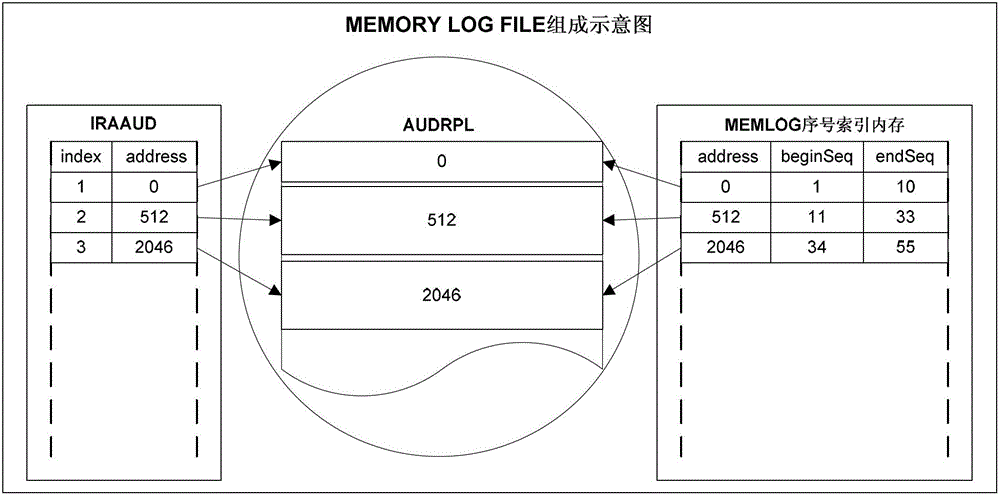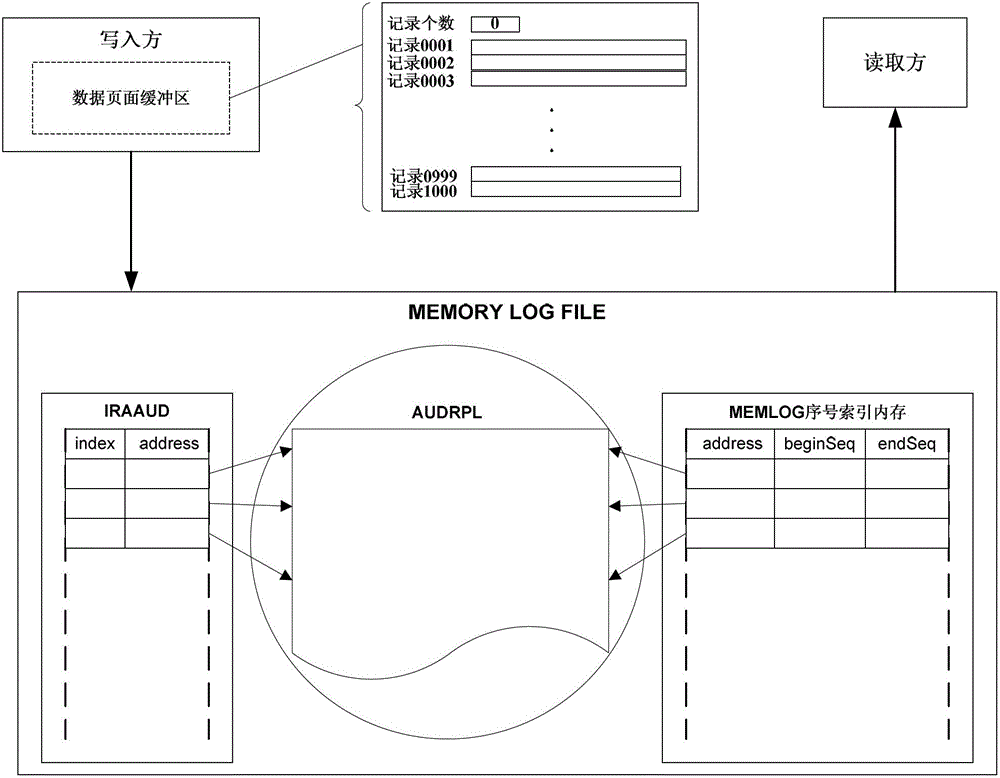A transaction-based method for reading and writing large-capacity data
A data reading and writing, large-capacity technology, applied in the direction of electrical digital data processing, special data processing applications, instruments, etc., can solve the problems of linear growth of data file throughput, high pressure on the file system, poor performance efficiency, etc., to improve read Write access performance, meet business needs, and improve throughput
- Summary
- Abstract
- Description
- Claims
- Application Information
AI Technical Summary
Problems solved by technology
Method used
Image
Examples
Embodiment 1
[0065] Using the read-write method of the present invention on a single host, its read-write system is as figure 2 As shown, it consists of a writer, a reader, and a transactional read-write module (MEMORYLOGFILE). There is a data page buffer in the memory of the writer. The data page buffer includes a buffer header and a The data record area of the actual data record, wherein the buffer header includes a 4-byte record number field for storing the record number in the current page buffer, and the transactional read-write module (MEMORYLOGFILE) has a built-in timer device, used to trigger the refresh of the data page buffer.
[0066] In this embodiment, because the fixed length of the data record is limited to 512 bytes, and the maximum delay of the data record from writing to opening and reading cannot exceed 5t, when the read-write system is set, the data page (WP ) is 1000 records, the length of the data page is about 512KB (4+512*1000), and the timing interval for trigg...
Embodiment 2
[0115] The present invention can also be used for high-efficiency reading and writing of large-capacity data with non-fixed-length records limited by the maximum length of the records. For the situation of non-fixed-length records, there are generally two ways to realize it.
[0116] The first method only needs to make appropriate modifications to the data page buffer (such as Image 6 As shown), the effect of Embodiment 1 can be realized. Assuming that the maximum length of a data record is 512 bytes, a fixed length of 512 bytes is still allocated to each data record in the data page buffer, and a field is added to the head of the data record to record each data record The actual length of other data writing and reading logic is the same as that of Embodiment 1. The advantage of using this method is that the logic is simple, and the characteristics of fixed-length records can be used to realize the rapid positioning of records in the data page. In the use of data files and A...
Embodiment 3
[0119] The system adopts multiple hosts and shared storage devices to implement the active-standby architecture. The more common mode is that the business process on the Master host continuously drops business data to the shared storage device. Once the Master host fails or the business process on the Master host is abnormal, The Slave host will use the business process on the machine to take over, and is responsible for loading business data files from the shared storage, and performing subsequent business processing after loading. The realization of this kind of active / standby switchover requires that the business data files are guaranteed to be correct and complete through transactions on the one hand, and on the other hand requires that the takeover of the standby machine can be completed in a relatively short period of time, and the ability to provide business processing to the outside world can be restored as soon as possible. Function.
[0120] Using the method of the p...
PUM
 Login to View More
Login to View More Abstract
Description
Claims
Application Information
 Login to View More
Login to View More - R&D
- Intellectual Property
- Life Sciences
- Materials
- Tech Scout
- Unparalleled Data Quality
- Higher Quality Content
- 60% Fewer Hallucinations
Browse by: Latest US Patents, China's latest patents, Technical Efficacy Thesaurus, Application Domain, Technology Topic, Popular Technical Reports.
© 2025 PatSnap. All rights reserved.Legal|Privacy policy|Modern Slavery Act Transparency Statement|Sitemap|About US| Contact US: help@patsnap.com



